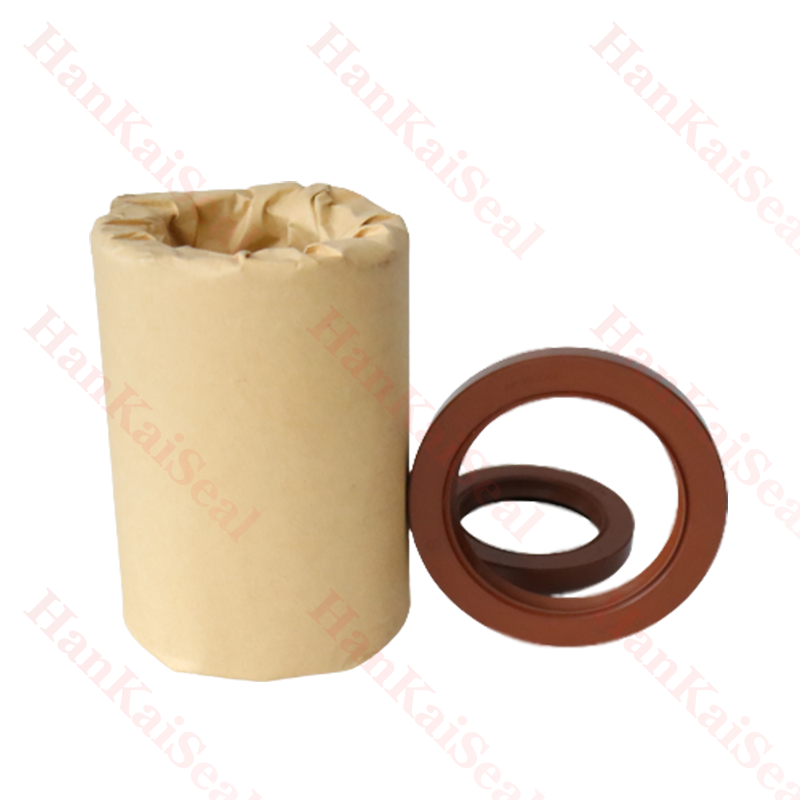ធ្នូ . 01, 2024 09:03 Back to list
Effective Solutions for Shaft Wiper Seal Design and Maintenance Techniques
Understanding Shaft Wiper Seals Essential Components for Machinery Longevity
In the realm of industrial machinery and hydraulic systems, shaft wiper seals play a pivotal role in ensuring optimal performance and longevity. These seemingly simple components are essential in preventing contaminants from entering critical areas of operation, thereby enhancing the overall efficiency of machinery.
What is a Shaft Wiper Seal?
A shaft wiper seal, often referred to simply as a wiper seal, is a type of seal designed specifically to keep dirt, dust, and other contaminants from clogging and damaging critical components such as bearings, hydraulic cylinders, and other rotating shafts
. Typically made from materials such as rubber, polyurethane, or silicone, wiper seals function by creating a barrier that wipes the surface of the shaft as it moves, ensuring that any potential debris is removed before it can enter more sensitive areas of the machine.The Importance of Wiper Seals in Machinery
The importance of wiper seals cannot be overstated. In hydraulic systems, for example, dirt and grime can lead to catastrophic failures due to increased wear and tear on internal components. By preventing these contaminants from entering, wiper seals significantly reduce maintenance costs and downtime, which are critical factors in industrial operations.
Additionally, wiper seals help maintain the integrity of the lubricant materials present within machinery. Proper lubrication is essential for smooth operation, and contaminants can disrupt the lubrication process, leading to increased friction and wear. A good wiper seal can prevent this by keeping the lubricant free from contamination, thus extending the life of the machinery.
Design and Functionality
shaft wiper seal

Shaft wiper seals come in various designs tailored to specific applications. Some commonly used designs include lip types, which feature a flexible lip that adapts to the surface of the shaft, and solid types, which create a rigid barrier against contaminants. The choice of design will depend on factors such as the type of machinery, the operating environment, and the specific contaminants to be excluded.
The functionality of a wiper seal is primarily determined by its material choice. Different materials offer varying levels of resistance to chemicals, heat, and abrasion, which means selecting the right material is crucial for the seal’s effectiveness in a given application. For instance, in environments where high temperatures are present, a silicone-based wiper seal might be more appropriate, while applications involving aggressive chemicals may require seals made from more resilient materials like fluorocarbon or polyurethane.
Installation and Maintenance
While wiper seals are designed for durability, proper installation and maintenance are key factors in their longevity. Incorrect installation can compromise the seal’s effectiveness, potentially leading to premature failure. It is crucial to follow manufacturer guidelines during installation to ensure the seal is fitted correctly and securely.
Regular maintenance checks can also enhance the longevity of wiper seals. Inspecting seals for signs of wear, such as cracking or deformity, allows for timely replacements before significant damage occurs. Additionally, ensuring that the shaft surface is clean and free from scratches will help the wiper seal function effectively, reducing the risk of contaminants entering the machinery.
Conclusion
In conclusion, shaft wiper seals are essential yet often overlooked components in machinery and hydraulic systems. Their primary function is to prevent contaminants from entering critical areas, thereby ensuring smoother operation and prolonging the life of essential components. With various designs and materials available, it is important for engineers and operators to carefully select the appropriate seals for their specific applications. Proper installation and routine maintenance practices can further enhance the effectiveness of wiper seals, contributing to a more efficient and reliable machinery operation. By investing attention and resources into these components, businesses can save significant costs in terms of repairs and downtime, ultimately leading to increased productivity and success in their operations.
-
TCN Oil Seal Metal Ring Reinforcement for Heavy Machinery
NewsJul.25,2025
-
Rotary Lip Seal Spring-Loaded Design for High-Speed Applications
NewsJul.25,2025
-
Hydraulic Cylinder Seals Polyurethane Material for High-Impact Jobs
NewsJul.25,2025
-
High Pressure Oil Seal Polyurethane Coating Wear Resistance
NewsJul.25,2025
-
Dust Proof Seal Double Lip Design for Construction Equipment
NewsJul.25,2025
-
Hub Seal Polyurethane Wear Resistance in Agricultural Vehicles
NewsJul.25,2025
-
The Trans-formative Journey of Wheel Hub Oil Seals
NewsJun.06,2025
Products categories
















